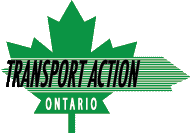
Confederation GO opening with extended Lakeshore West service
By Transport Action Ontario | Intercity Rail and Bus
Metrolinx the announced that services to the newly completed Confederation GO station in Hamilton will commence on October 27, 2025.
Monday to Friday:
- Three daily round trips to Niagara Falls will call to Confederation.
- Four eastbound trips will start at Confederation.
- Three westbound trips will be extended from West Harbour to Confederation.
Saturday and Sunday:
- Services to and from Niagara Falls will increase from three to four round trips.
- Five eastbound trips will be start at Confederation.
- Two westbound trips will be extended from West Harbour to Confederation.
The initial service pattern is limited, but is likely to be expanded as passengers begin using the new station.
“The opening of Confederation GO Station will be a game changer for residents in East Hamilton and Stoney Creek, while bringing much-needed relief to Burlington and West Harbour GO.”
Doug Ford, Premier of Ontario
The station is part of the GO Expansion project, with construction having been started in 2017, although completion of the station and trackwork, including connecting tracks at West Harbour, took longer than expected. Transport Action Ontario continue to be concerned about the cost escalation and timeline creep associated with Metrolinx projects.





